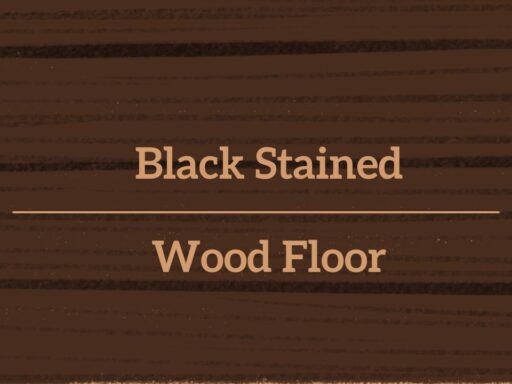The staining of ash wood stain is such a versatile and customizable way to make the most of the natural beauty in it. Ashwood has been used because it is rich in historical purposes, and durability and has distinctive grain patterns that can be seen even through clothing. The stain allows for the customization of ash wood into different shades that will blend well with various designs and aesthetics.
Introduction to Ash Wood Stain
Wood stain can be one of the unsung heroes in the intricate alchemy of home design. It could turn something from dull into magnificent lift any room out of its deepest depths and tell everyone about eternal grace. Among many wood types that can be stained, ash wood has always been a favorite due to its honey color and beautiful grain patterns. For every proud homeowner, DIY enthusiast, or interior design connoisseur, learning about ash wood stain adds another fascinating chapter to their artistry.
Advantages Associated With Using Ash Wood Stain
Using ash wood stain can have several advantages for what folks may find on it such as looking better than before due to coatings on top while providing exceptional surfaces thus enhancing their durability. The following are some of the main advantages:
- Better Look: Therefore, it is better because when you use an ash-based coating there is more depth, dimensionality, and color variation in tones on grains of ash lumber. This therefore enables you to have personalized looks that match your décor or when undertaking a certain project.
- Safety: To prevent early possible discoloration/warping caused by discolorations or warping that might spoil them quickly it is recommended to apply stains only at surface levels since this procedure also provides utmost protection against water dampness, daily damages, etc., which is provided by staining the surface layer of ash wood.
- Uniformity Of Color: Consistency will help when using different components created from this oak; hence they would seem like they belong together within a particular project among other items made up of various woodwardias like mine.
- Grain Patterns Emphasis: Wood texturing through dyeing helps bring out natural patterns in the grains making them look more attractive as well as having more dimensions.
- Versatility: Therefore adjustments to suit light shades into an attractive color matching your desired theme becomes quite easy, especially by applying slight changes here and there.
- Many Applications: Therefore, the ash wood stain in this way offers a great deal of freedom when it is applied to the floorings; cabinetry; furniture, or other decorative woodworking projects that need to be changed on a regular basis due to their appearance depending on customer preferences at any given time.
- Simple: Hence most brands of ash wood stains are fairly easy to use which makes them very convenient for professionals as well as common individuals since they require minimal Excel.
- Eco-Friendly Options: However there are ash wood stains that are environment-friendly, e.g. those manufactured using water-based substances or ones having low levels of VOCs (Volatile Organic Compounds) which make them less hazardous to humans and nature.
Different Types of Ash Wood Stain
Ashwood is a popular choice for furniture and cabinets because of its pale color, straight grain pattern, and strength. Nevertheless using staining it acquires natural beauty besides changing its outlook completely. Here is an overview of different types of ash wood stain you can explore:
Color Boosters
Clear Stain: These do not change but rather accentuate natural light tones in the woods made from oak. Lighting up more rustic elements or simply making it look more basic may depend entirely upon one’s interpretation.
Light Stains: For instance, some light honey, gold wheat, or amber shade changes show how grains remain visible while giving these natural colors extra depth.
Medium-Tone Stains
Natural Stains try to imitate other high-priced woods like walnut or cherry. Though, they do not completely resemble the grain patterns of those woods but can provide a softer appearance than maple.
Medium Brown Stains: Moreover, there are dark brownish ones; these cover most of the grains leaving only rich deep brown stains within certain furniture pieces that represent traditional types/suites, etc.
Dark Stains
Espresso and Dark Walnut Stains give depth with near-black or dark brown shades. The wood grain will be hidden mostly giving a sophisticated and modern look.
Specialty Stains
Grey Stains: These have become popular for contemporary designs. They range from light driftwood to darker charcoal shades making them ideal for adding sophistication to modern pieces of furniture.
Color Washes: These are thin stains that just let the wood grain show through with a touch of color. Some of the colors include washes that can be used to create any preferred shade.
How to Choose the Right Ash Wood Finish for Your Furniture
When it comes to choosing an ash stain for your furniture, it may seem quite overwhelming with so much variety available. However, by considering some important factors, you will be able to make informed decisions about such matters. Firstly think about what color and finish you would like to achieve. Consider if you would prefer it to complement or contrast your existing color scheme.
This also entails considering the type of wood being used as well as its nature in terms of texture and patterns among other things. The right stains should be chosen depending on patterns present in ash tree planks. Furthermore, this also depends on how much protection is required in different situations because particular stains come with extra features such as water resistance or UV protection meant for outdoor furniture.
DIY Tips on How to Stain Ash Wood
Staining ash wood may sound intimidating for most ambitious DIYers out there. With adequate preparation and proper tooling at hand along with a steady hand, one can easily achieve the best staining possible.
Select an appropriate stain: Choose a stain that fits the type of finish you desire
Prepare your wood properly: Ensure that you sand your ash wood properly allowing it to become smooth enough to hold the dye properly.
Apply dye: After applying the first coat, wipe off excessive dye before reapplying more coats depending on requirements after it dries.
Finish up: Finally, once you have reached your desired color of the wood, seal the stained surface with a good finish which will protect it from further damage in years to come.
However, when staining remember that patience and accuracy are essential. Therefore if you rush through these steps, you may end up settling for an imperfect fit that is hardly reversible at all.
Getting Furniture Ready for Staining
The first step before applying ash wood stain is to prepare your furniture properly. Always ensure that this surface is clean enough devoid of any dust, dirt, or previous finishes. Clean the wood gently using a mild detergent mixed with warm water and dry completely. In case there are any existing finishes or sealants on your piece of furniture then sanding them down may be necessary so as to create a smooth even surface where the stain will adhere accordingly.
Apply a coat of wood conditioner after cleaning and sanding the wood to help it take stain evenly over its surface. This specific step is crucial because ash woods easily blotch. The product will have reduced irregularities in color absorption if conditioners are used.
Refurbishing with Ash Wood Dye
The next thing is applying ash wood dye on your furniture. Start by stirring thoroughly so that there is an even distribution of color in the stain. Using a brush or clean cloth, rub the stain onto the wooden grain, working on small portions at a time. Do not wipe off any extra stain before the recommended time period by the manufacturer has expired.
Should you achieve the desired shade of color, employ a clean cloth for wiping off surplus dye. Be careful not to leave additional droplets as they can cause patches or streaks that are unevenly distributed. Only then should another layer be applied following complete drying of your object.
Tips for Getting Desired Finish with Ash Wood Stain
Here are some tips for getting your desired finish using ash wood stain:
It would be good if you could try this out in some unnoticeable area first before applying over all parts of it. In case its hue does not amuse you, slight adjustments might be necessary.
More than one thin layer instead of applying one thick coat gives better control and minimizes running or dripping blunders.
The lint-free fabric should be used during application so that nothing gets trapped inside and it spreads uniformly.
Make sure each coat dries completely prior to adding more layers; otherwise, they will mix creating roughness and muddy view in general.
Maintaining and Caring for Furniture with Ash Wood Stain
Ash-stained furniture needs regular care and maintenance for durability purposes. Keep on dusting it regularly using soft cloth materials such as feather dusters rather than waiting until dirt accumulates on top of it. Avoiding strong detergents can remove protective finishes from surfaces made from these materials.
On the other hand, should you have used ash wood stain to create your piece of furniture and any spillage or staining accidentally occurs thereon, it is better off if cleaned immediately so as not to cause permanent damage. Lightly remove the marks using mild soap water solution or specialized wood cleaner solutions. However, caution has to be observed with excessive moisture as it can eventually lead to swelling or warping in that wood.
Common Mistakes When Using Ash Wood Stain
Some common mistakes when it comes to working on ash wood stains include:
Preparation Mistakes
Failure to do Proper Cleaning: Like any other kind of wood, ash needs proper cleaning by removing dust, dirt, or grease before staining. These impurities can hinder even staining and result in uneven surfaces. Clean the surface using a damp cloth wetted with mineral spirits then dry it before applying a stain.
Poor Sanding: Smooth staining can be achieved with sanding if you want an excellent finish. The first sanding should be done with 120 grit sandpaper on a sanding block then finer ones (180-220 grit) should follow for a smoother finish. Sand with the grain and remove all sanded debris prior to staining.
Mistakes in Staining
Hurry Up: You should not rush about it as this will not improve anything. Apply very thin coats that have even thickness; allow each coat to dry completely before proceeding. Over-applying at one time leads to blotches, stripes, or uneven colors.
Unequal Coating: To stain wood evenly throughout its surface, apply it using a clean cloth or brush. Remember that corners, end grains, and crevices may get different stains on them.
No Excess Stain Removal: After putting on a thin layer of it, any remaining stain can be wiped out by employing a clean piece of rag for a non-stained appearance in the final product.
Errors in Drying and Finishing
Inadequate Staining Conditions: Do not use sunlight, high humidity, or cold weather to stain your furniture. These conditions could alter drying rates resulting in uneven darkening or distorting at worst. Ideally, apply stains in well-ventilated areas having moderate temperature and humidity where possible.
Insufficient Drying Time: It is necessary for every application of dye to dry off fully prior to applying another one. Inadequate drying time often leads to cloudy or spotty finishings. Check the manufacturer’s recommendations regarding drying times between coats for stains.
No Clear Coat Application: This clear top coat repels moisture from your project while shielding against scratches and UV rays which can damage the stained wood underneath it all. Pick out an appropriate clear coat based on the manufacturer’s guidelines before applying over the existing stain.
Frequently Asked Questions
Can I put ash wood stain on other types of wood?
Ashwood stain can be used on woods besides ash; nevertheless, you should know that the final color will depend on which species of timber are present.
How often should I reapply ash wood stain?
There are many factors determining when ash wood stain needs to be reapplied like the type of finish used and how much wear it has received. It is generally suggested that you re-stain every 2-3 years or as necessary though.
Can I use a clear coat over the ash wood stain?
Yes. The durability and lifespan of ash wood stains could improve if they are applied under clear coats or some protective finishes. In any case, it is advisable to follow instructions given by the manufacturer concerning a specific product being used.
Conclusion
Finally, applying ash wood stain on your furniture can make it more graceful and strong. There are various stains in different shades which you can choose depending on your room’s theme. By properly preparing it, staining it in thin layers, and keeping it up regularly, its beauty will last for ages to come. Then why wait? Begin improving your furniture using ash wood stains today and see your interior décor change dramatically!





